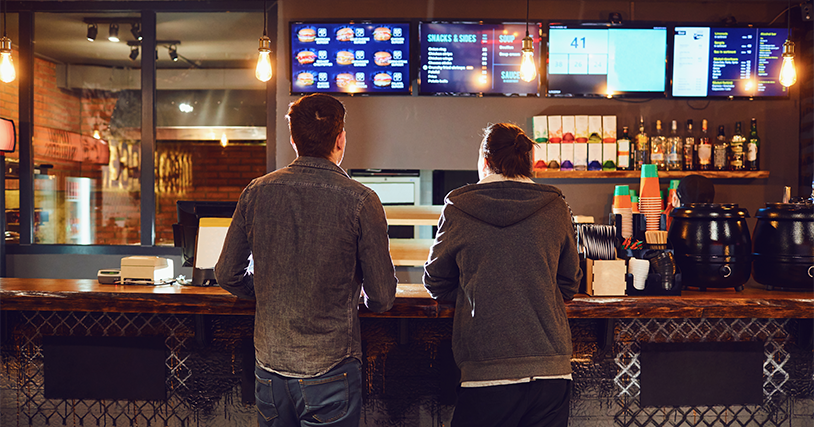
Are you looking to set up digital menu boards for your restaurant? The rewards of increased customer engagement, consistent data tracking and up-to-date product information are well worth the investment in the technology and services available to support it. As you consider signage vendors, here are ten points to help you choose the menu board solution that’s best for your business. Whether it’s hardware or software selection tips or ways to monetize your efforts, we’ll walk you through all the factors to consider.
- Determine your Budget. Consider your overall budget for implementing digital menu boards at your location, including the cost of hardware, software, installation and ongoing maintenance.
- Solicit Feedback. Look for testimonials and reviews from other restaurant owners who have used the same digital menu boards solution. Consider their feedback on ease of use, reliability and customer service to help inform your decision.
- Estimate Return on Investment (ROI). Implementing a digital menu board solution is a big investment for your business – consider factors such as increased sales, reduced printing costs, improved customer experience and overall operational efficiency when calculating your ROI.
- Select the Ideal Display Size and Orientation. A number of factors go into picking the optimal display size and orientation (portrait or landscape) for your restaurant’s space and layout, including viewing distance, available wall space and overall aesthetic.
- Choose a Content Management System (CMS). Your digital menu boards are only as good as the content you feed them. A user-friendly CMS allows you to easily create, update and schedule menu content. Consider advanced features such as remote management, customization options and compatibility with different file formats.
- Identify Hardware Requirements. Identify the necessary hardware components for your digital menu boards, such as displays, media players, mounts and cabling. Ensure they are compatible with each other and meet your restaurant’s specific needs.
- Envision Your Content. Depending on your internal resources and capabilities, decide whether you will create your own content or outsource this responsibility to a professional content creation service. Consider factors such as design templates, customization options, and the ability to showcase different types of content, such as images, videos, and animations.
- Check Your Compatibility. Integrating your digital menu boards with your restaurant's Point of Sale (POS) system offers the ability to provide real-time updates on pricing, promotions and menu items. Be sure to check if your existing POS system is compatible or if additional integration is required.
- Research Training, Customer Support and Maintenance Options. Look into the different options offered by the digital menu board provider, including warranty, technical support, software updates, online tutorials and customer support channels. Consider their responsiveness, reliability and availability of documentation or resources to ensure that your staff is adequately trained to use the products.
- Plan for Installation. Understand the entire installation process, including any necessary electrical work, wall mounting and cable management. Confirm if the installation can be done in-house or if professional installation services are required.
Adding digital menu boards to your restaurant can help increase sales, reduce order times and make the overall customer dining experience more enjoyable. An end-to-end integrated digital menu board solution like the one from Hughes can help you automate content updates, display real-time pricing and ensure a unified brand message. This checklist will help you carefully consider your needs and determine the best solution for your business, both today and as it continues to grow.